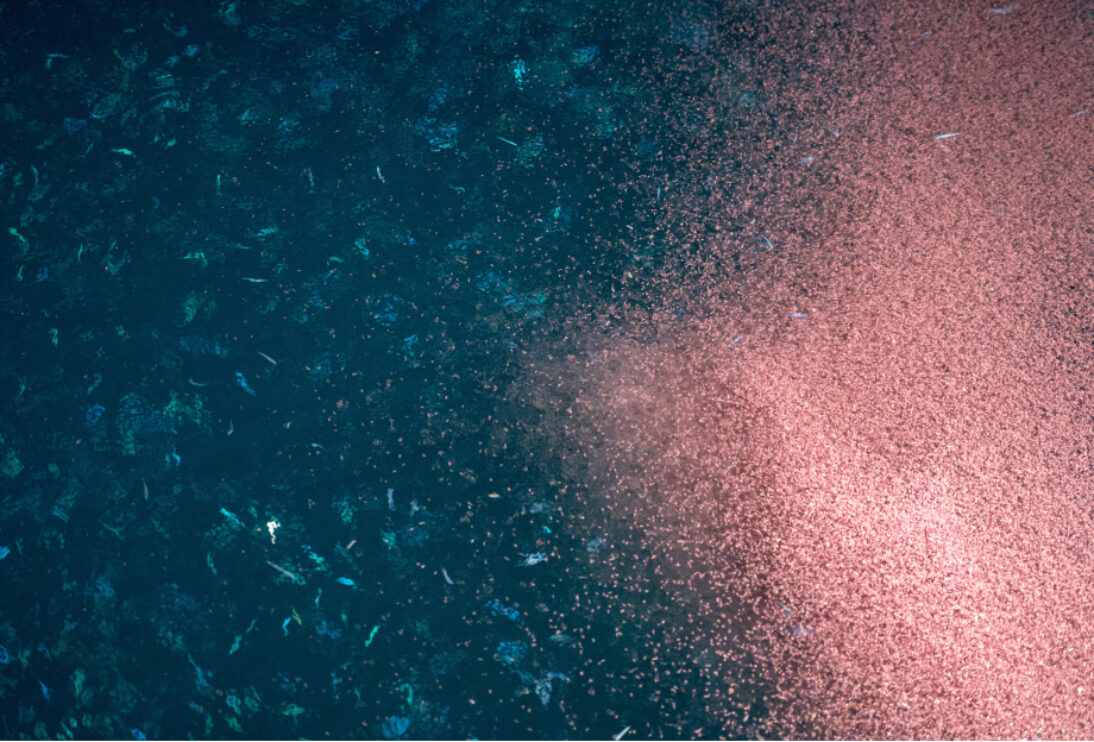
Eco-Harvesting Krill: Future of Antarctic Krill
Krill, a small shrimp-like crustacean which is only a few inches long, is one of the largest biomasses on the planet. In fact, they are so abundant that when they gather in a swarm, they are visible from the moon. Krill are at the beginning of the marine food chain and provide an abundance of health benefits to the marine ecosystem, as well as for humans.
Because they are so important to our global ecosystem, organizations such as The Commission for the Conservation of Antarctic Marine Living Resources (CCAMLR), The Association of Responsible Krill Harvesting Companies (ARK), and The Antarctic Wildlife Research Fund (AWR) develop science and monitor sustainable krill harvesting guidelines and regulations. This collaborative effort aids in the support of a healthy and well-balanced marine life population.
We are proud that the operations behind Kori Krill Oil, notable for low harvesting ratio of the abundant krill biomass, have earned the highest sustainability credentials, and we continue to commit to providing you with the highest quality, most sustainable krill oil available.
Sustainable Harvesting
Krill is managed and conserved by CCALMR, a treaty organization established in 1981, with representation from 26 countries and the E.U., and a specially designated scientific committee. Alongside CCAMLR, there are a number of independent international agencies which collaborate to provide science and regulate the krill fishery in Antarctica, making it one of the most sustainably managed fisheries in the world.
What are Fishery Catch Limits?
The Antarctic krill fishery has precautionary harvesting restrictions to ensure a healthy reproductive population of krill and a healthy food supply for marine mammals. This maintains the long-term sustainability of the krill fisheries without damaging the ecosystem.
Scientists in CCAMLR estimate the existing krill population using a set of equations determining the species' birth rate, growth rate, and mortality rate. A precautionary the catch limit for krill has been set to less than 1% of the biomass and generally annual catches for the entire industry reaches about 0.5-0.8% of the biomass. In comparison, most other reduction fisheries have catch limits that are from 20% and up to 55% of the biomass.
The Future of Krill
In order to manage krill harvesting at the proper time and spatial scales, creating new initiatives would give an enhanced understanding of krill biology and ecology. These four essential activities consist of:
- Embracing the fisheries as a research platform.
- Increasing the number of laboratories on Antarctic stations to enable field investigations of the krill and ecosystem processes.
- Increasing autonomous tool capabilities and creating research networks to gather and examine this data
- Concentrating on krill biology while conducting scientific study surveys where fisheries are absent.
By combining these efforts, researchers have the chance to incorporate the data produced into cutting-edge models that include changes to the krill population. This would not only address sustainability but also enable an all-encompassing approach to climatic changes—preserving the Antarctic ecosystem as a whole.
Eco-Harvesting Technology
Kori Krill Oil is certified sustainable by the Marine Stewardship Council (MSC) and leverages Eco-Harvesting technology, a patented trawl system, that singles out unwanted by-catch and releases it unharmed. The technology uses a permanently submerged mid-water vacuum protected by a fine mesh net that keeps out organisms larger than krill. This technology is designed to remain underwater while a continuous stream of water flows through a hose, bringing live krill into the holding vessel. This allows for the immediate processing of fresh raw material—preserving the highly digestible enzymes of the krill for a superior quality product, while protecting the marine ecosystem against unwanted catch of other species.
Traditional trawling methods, such as hauling catch-up on deck and emptying tanks before processing, are unsuitable for krill, making this new technology crucial to the sustainability of krill harvesting.
In addition to the Eco-Harvesting technology, constant development of leading-edge innovation and technology allows our operations to find the wild krill by more carbon friendly means making the operations behind Kori Krill Oil truly the leader in sustainability.
Further, as part of our commitment to protecting the sustainability of krill and other animals in the Antarctic, we have ensured that both our harvesting and packaging practices are environmentally friendly. As a result, all Kori Krill Oil boxes and bottles are 100% recyclable, including the cap and label.
Kori Krill Oil and Sustainability
Are you interested in learning more about the origin of your Kori Krill Oil?
Our cutting-edge krill harvesting vessels are equipped with sophisticated GPS systems, allowing every bottle of Kori Krill Oil to be tracked back to the precise location where it was harvested so you can verify the sustainability of Kori’s products. Simply scan the QR code on the back of your krill oil box to track where your krill came from!